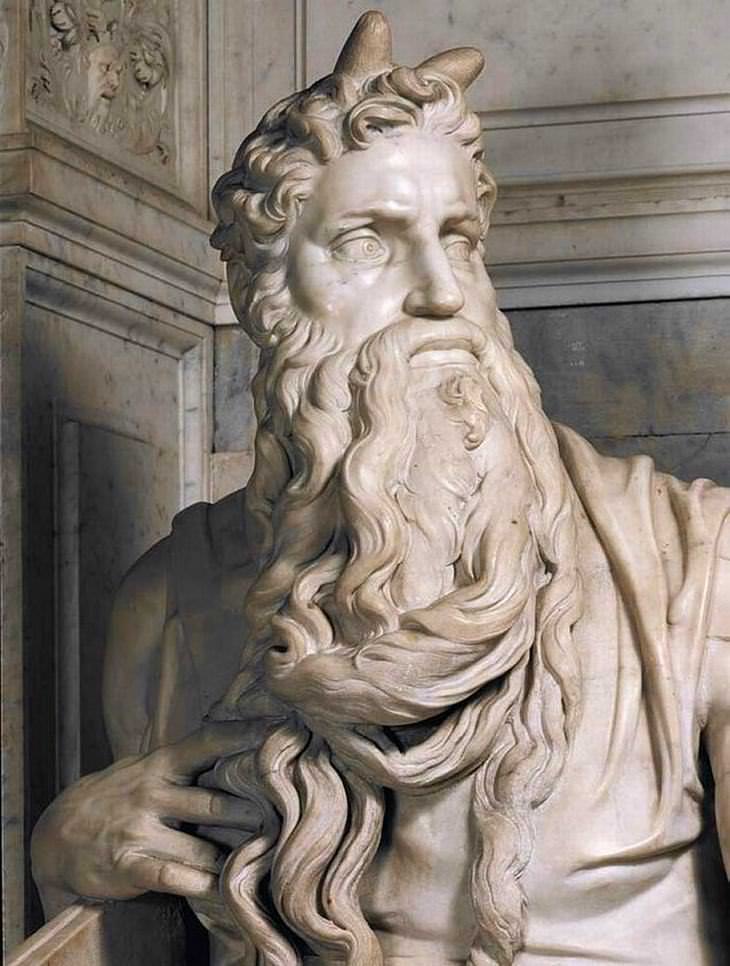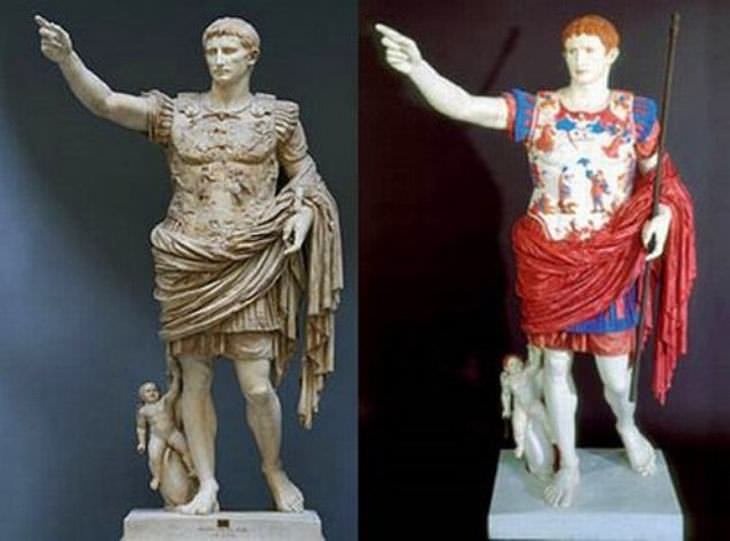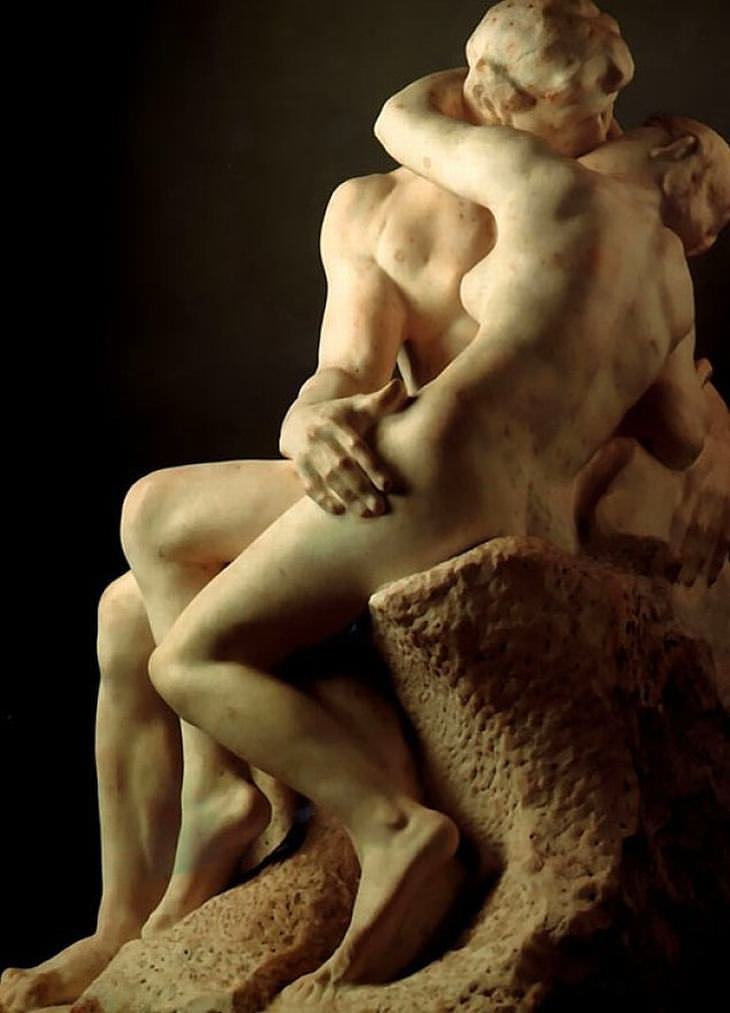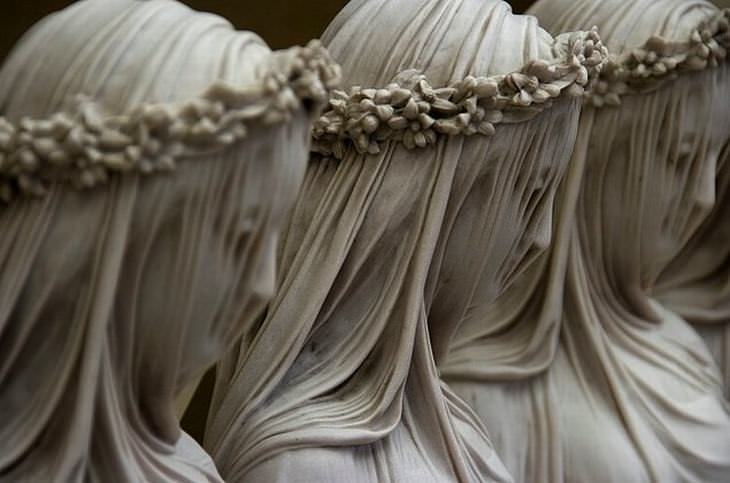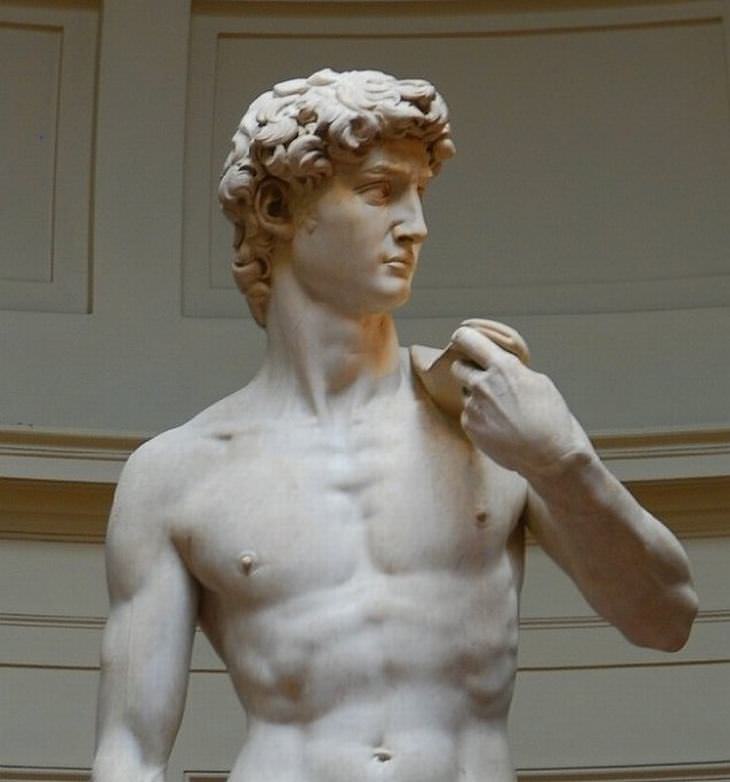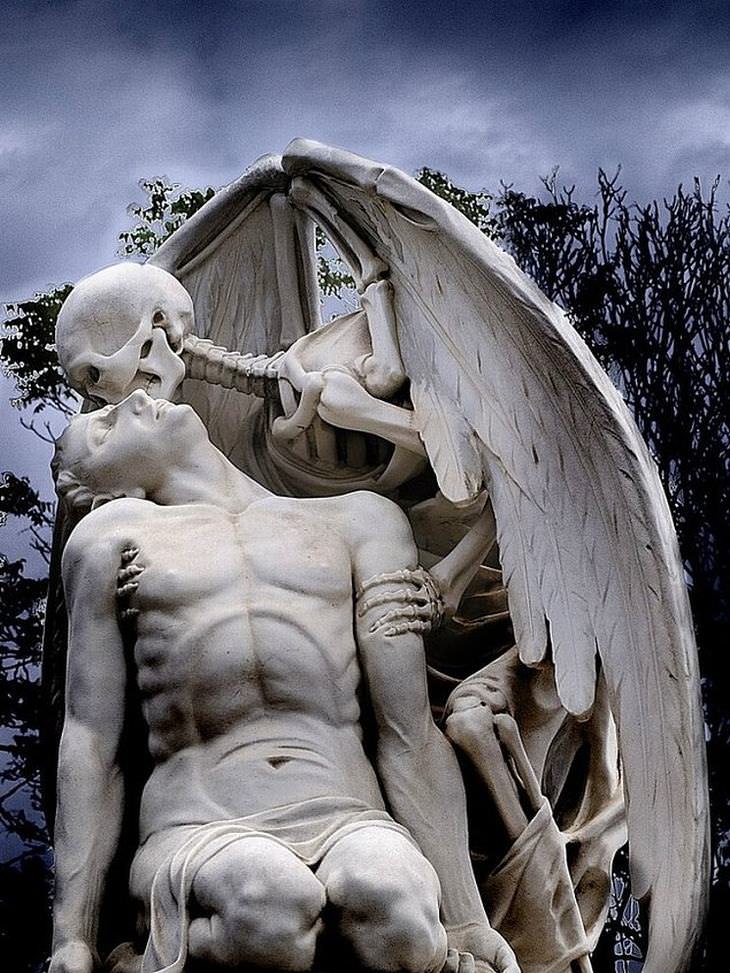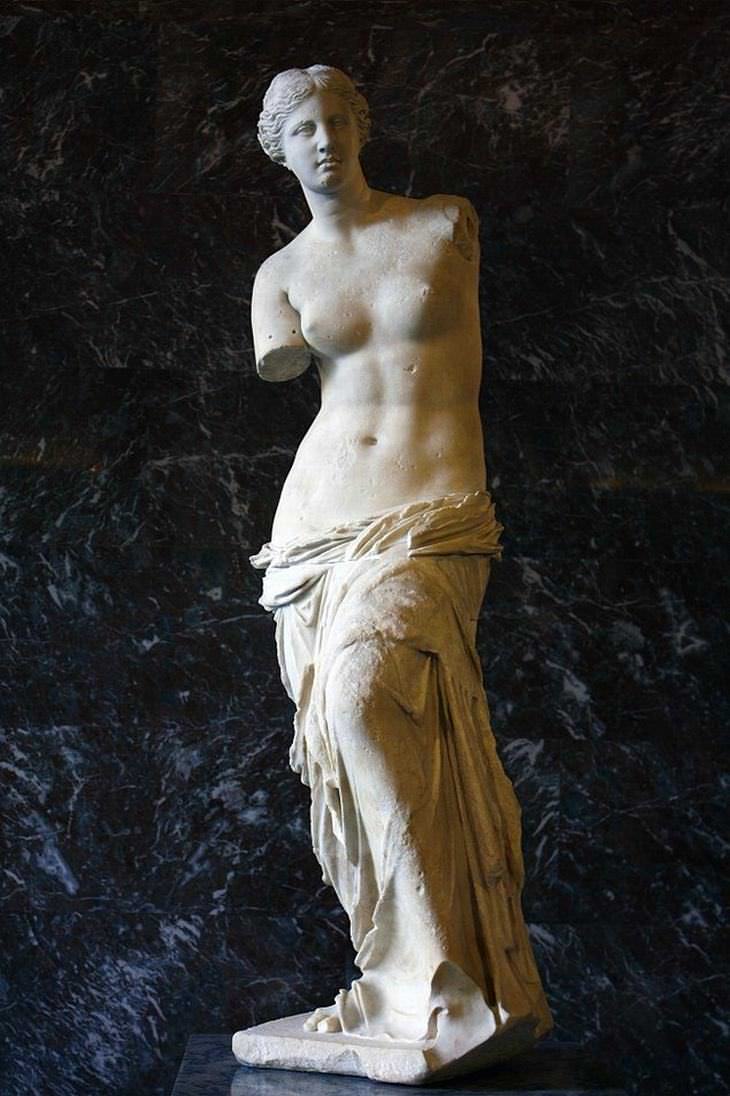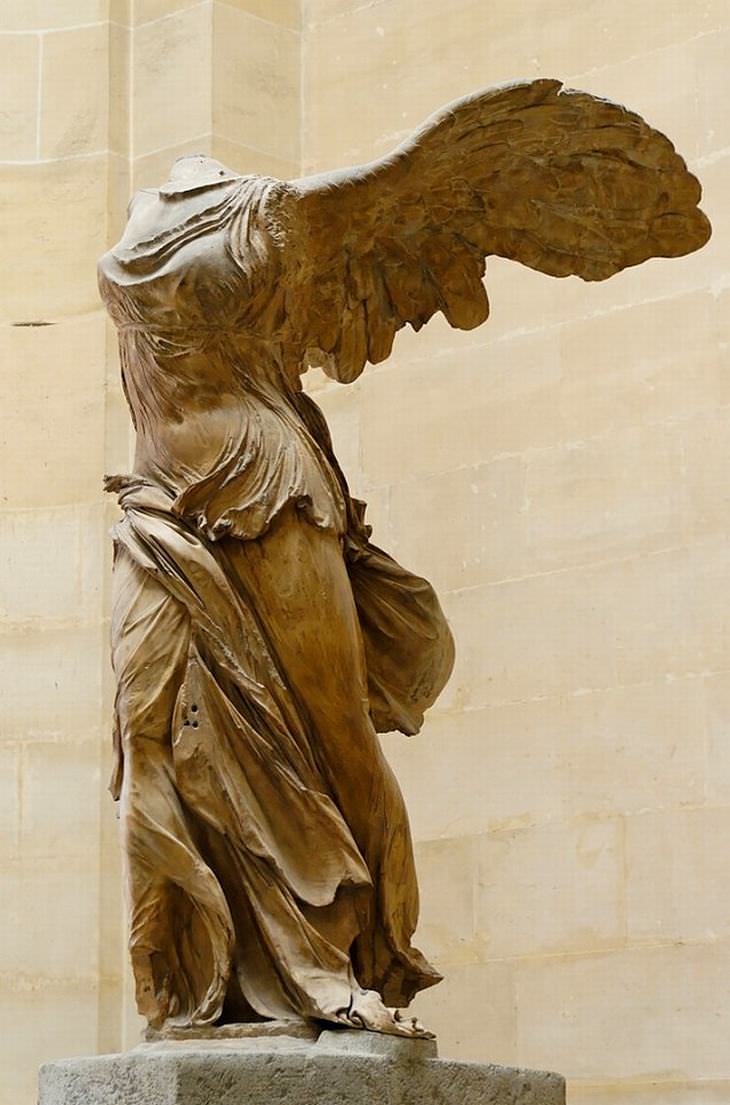Michelangelo made a sculpture of Moses with a pair of horns. Many art historians believe that this particular statue came into being thanks to a misinterpretation of the Bible. The Book of Exodus states that the Jews had a hard time looking at Moses’ face when he descended Mount Sinai with the Ten Commandments in hand. The thing is that the Hebrew word used in the Bible passage in question can be translated both as “radiance” and “horns”, so it’s pretty obvious that Moses was radiating light in this context.
2. Colorful antiquity
The fact that Roman statues were actually elaborately painted has only been discovered recently thanks to various studies looking into the matter. It turns out that many of them were painted in bright colors that faded over the centuries and finally disappeared completely.
3. The Suffering of the Little Mermaid
Copenhagen’s Little Mermaid statue is one of the world’s most famous, but it also happens to be a magnet for vandals. It has been broken and sawn into pieces on more than one occasion, and the Little Mermaid still bears scars around her neck, indicating that her head to be replaced. After a string of vandalism incidents over more than 40 years, the city’s authorities had the Little Mermaid moved further into the harbor to prevent further vandalism and tourists from attempting to climb all over her.
4. The Kiss without a kiss
This sculpture, which is known as The Kiss, was once named Francesca da Rimini after a 13th-century Italian noblewoman who fell in love with her husband’s younger brother. The noblewoman and her lover were discovered reading the story of Lancelot and Guinevere by her husband, who promptly murdered them. The lover is depicted holding a book in his hand in the sculpture, and his lips do not touch the noblewoman’s, hinting that they died before committing a “sin” together.
5. The secret of the marble veil
It’s incredible to think that this sculpture was even carved out of simple stone, and that’s because of the semi-transparent veils covering the figures’ faces. The secret of achieving this is using a block of marble that has two separate layers, with one thicker layer and one more transparent layer. Although they’re difficult to find, these stones really do exist. The sculptor, Raffaele Monti, worked the marble and preserved the normal surface texture while carving along the edges separating the thick layer from the more transparent ones. This is what makes the veils look transparent.
6. The perfect David made of corrupt marble
Although Michelangelo’s statue of David is often regarded as the Western ideal of male beauty, it turns out that David is actually cross-eyed. This was discovered by a Stanford University professor who scanned David with laser computer technology. With that being said, David’s defect is also thought to be deliberate on Michelangelo’s part so that he would look impeccable when viewed from either side.
7. Death unto art, art unto death
Poblenou cemetery in Barcelona is home to a most mysterious statue, the creator of which remains unknown to this day. It’s thought to have been made by Jaume Barba, but others dispute this claim and think that it was made by Joan Fonbernat. It’s situated on one of the cemetery’s farthest corners and became the inspiration for Ingmar Bergman’s movie, The Seventh Seal, which is about the fallen Knight and Death.
8. The arms of Venus de Milo
One of the Louvre’s best-known sculptures is said to have been discovered by a peasant on the Greek island of Milos in the 1820s. Sadly, Venus was actually broken into two separate pieces when she was found. She held an apple in her left hand, and she was holding her dress with her right hand. Her historical value was recognized by French naval officers, so she was promptly ordered onto a ship when a quarrel broke and she was dropped, an accident which resulted in both of her hands being broken off.
9. The beautiful imperfection of the ’’Nike of Samothrace’’
This majestic statue of Nike was discovered on the Greek island of Samothrace in 1863. She was happened upon by the French consul and amateur archeologist, Charles Champoiseau. Fashioned out of golden Parian marble, Nike was thought to have been made in the 2nd century BC to commemorate the naval victories of the Greek fleet. Numerous attempts were made at recreating her missing head and limbs, but they just seemed to detract from rather than add to her beauty. In fact, her imperfections only add to her majesty.

